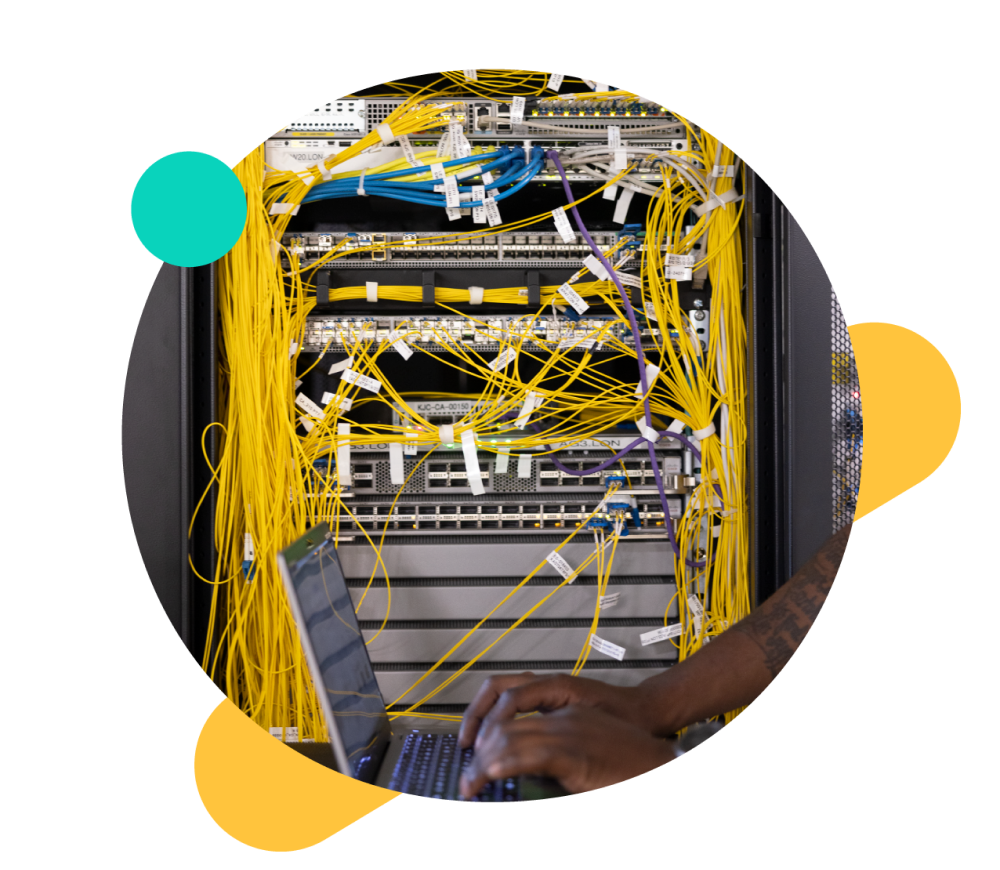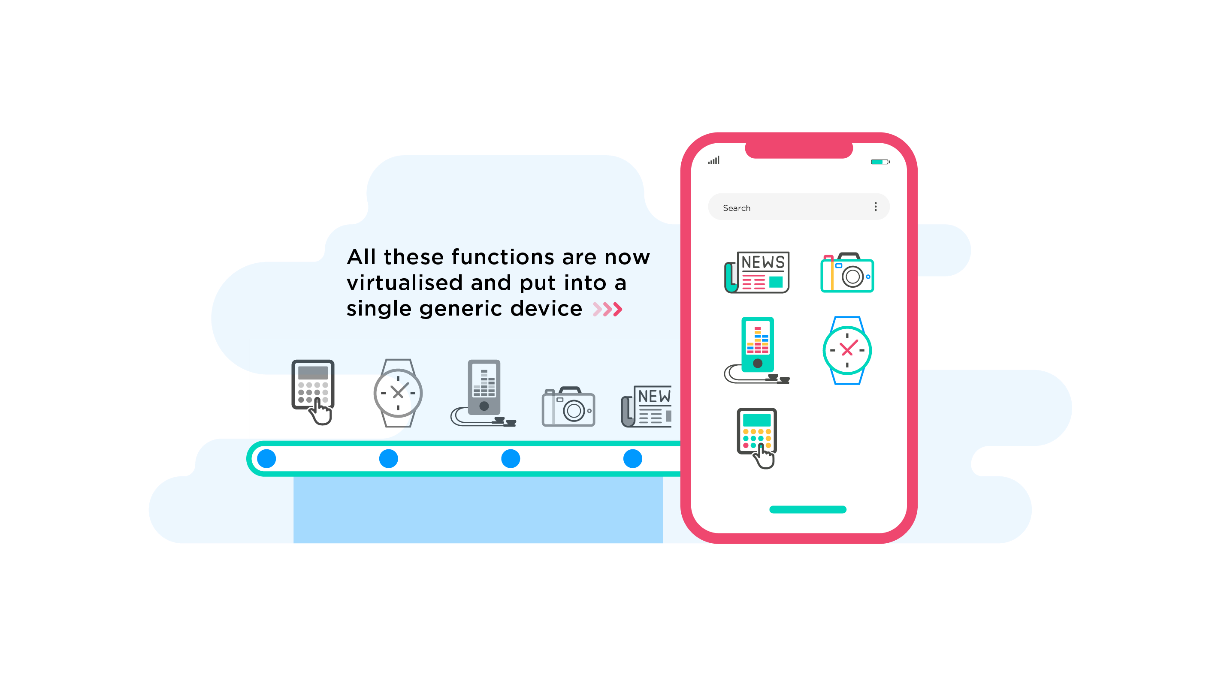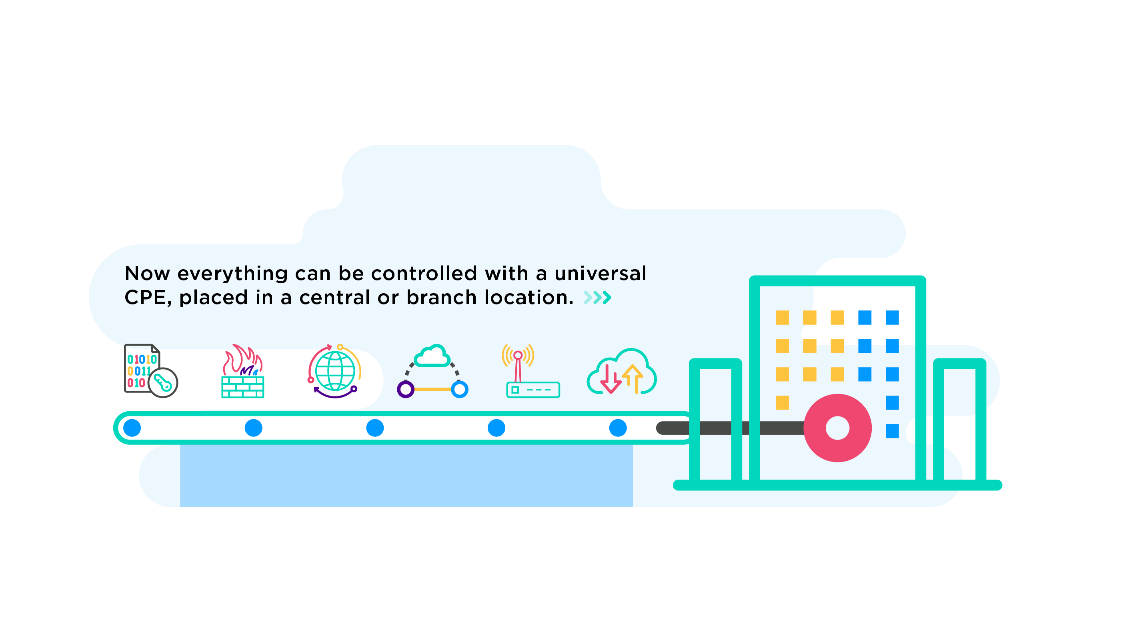| 15 min read
What is Universal CPE?
As a result of the global pandemic businesses are moving at an even faster pace than predicted towards virtualization. Universal CPE (uCPE) is a key component in enabling such virtualization, so what is uCPE? and why should businesses look at adopting it?

An introduction to universal customer premises equipment (uCPE)
As a result of the global pandemic businesses are moving at an even faster pace than predicted towards virtualization. Universal CPE (uCPE) is a key component in enabling such virtualization, so what is uCPE? and why should businesses look at adopting it?
Where once networks would rely on specialised hardware to deliver services – a router, a firewall, a WAN optimiser – either some or all of that functionality is now delivered virtually as software. Now everything can be controlled with a universal CPE, placed in a central or branch location.
uCPE, or Universal Customer Premises Equipment, is a general purpose platform that integrates multiple (previously physical) functions virtually, to any site on a network. Over recent years, network service providers have continued to virtualize to decrease operational costs, time to service and to create better value for their customers.
As virtualisation is becoming more commonplace across the industry, general purpose processors in customer-edge equipment has grown with it. This means now that where once networks would rely on, or be limited by, specialised hardware to deliver services – a router, a firewall, a WAN optimiser – either some or all of that functionality is now delivered virtually as software.
If that still sounds a bit technical, we break it down further below. If it all makes sense, skip ahead.
How are network services built?
A simple network will have two basic components:
Our focus is more on the end devices, which we call CPE (Customer Premise Equipment). These are called CPE because the devices are generally installed in a customer’s location, whether at home, a large office building or a data centre.
What are the problems with existing networks, and how did we get to uCPE?
Traditional CPE’s consist of specialized hardware devices to perform dedicated functions. These hardware-based functionalities are known as Physical Network Functions. These consist of provider-owned, specialized hardware devices, such as a device for Firewall from Palo Alto, a router from Cisco and a switch from Juniper, which are then deployed to a customer premise, or a data centre.
In the past, this would mean that businesses would need multiple devices on site, helping them move data from one end to the other safely and correctly.
Having to comply with these kind of hardware devices and this model of working can be a challenge for a business. For example, opening a new office, or simply adding a new network function, would involve:
The whole process is not only time and resource-consuming, but expensive too. What’s worse is if the business wants to change, or upgrade its hardware, which would mean going through the entire process again.
How did we solve the issue of hardware in other areas?
If you looked around your home a decade ago, you would find hardware devices which we no longer or rarely use today. For example a small torch (or Flashlights, for folks who prefer cookies instead of biscuits) or cameras (unless you are a professional photographer), or music players.
What happened to all these devices? It is not that we no longer enjoy music or stopped looking for things under the bed using flashlights. All these devices became software applications (or apps) which now run on your smartphones. Additionally, we found new uses for the smartphone.
What is Network Function Virtualisation?
Network Function Virtualisation is a new way to add, distribute and run networking services. It takes away Physical Network Functions from their dedicated hardware devices, so that they can run on standardised hardware – think as if they were apps on the Google Play Store, all made by different people, running on the same device. These functions, such as the previously mentioned firewall, or intrusion prevention, become Virtual Network Functions (VNFs).
uCPE uses these Virtual Network Functions to consolidate loads of specialised devices into one general purpose box. It’s the next step in the evolution of the smart network, and it puts way more control than ever before in the hands of the customer.

CPE´s are having a smartphone moment
The introduction of uCPE has done for network functions what smartphones did for us in our day to day lives. In works (roughly) in three steps:

What are the key benefits of uCPE?
Moving to virtualisation is a key part of organisation’s digital transformation, and gives a massive range of benefits, including:
The impact of uCPE
Today people expect a lot from their network, both in terms of performance and bandwidth required, but also in terms of flexibility and responsiveness. Cloud computing ushered in an era of virtualisation for enterprise IT and Local Area Network (LAN) infrastructure, bringing in a major change in how IT services were deployed and used. But this was, at the time, barely felt in the Wide Area Network (WAN) world, until the deployment of SD WAN, and even this was largely contained.
If virtualisation is being introduced for enterprises in the enterprise IT and LAN infrastructure, why not for the WAN?
UCPE is bringing the power of the cloud to the traditional telecommunications network. With lower costs, rollout time and overall maintenance, uCPE brings with it easier operational improvement, experimentation and innovation. The additional software-defined approach also brings easier WAN optimisation, providing greater visibility into data & encryption analytics and application usage, making it quicker and easier for businesses to optimise their WAN.
uCPE will evolve to Edge
Colt uCPE already offers flexibility and agility, with an expanding list of VNF´s available to customers. Similar to Google Play, network service providers are developing their own version of “Play Store” or VNF library so that customers can choose, buy, download and update functions at will.
uCPE is a crucial step in the transition to Multi Access Edge Computing. Network service providers have started carving out space (which includes compute, storage and memory) for customers to run their own applications. Offering a ¨micro-cloud¨ at their premises, where businesses will be able to run whatever application they need. For example, if a customer wants to run a security monitory solution, instead of running it in a proprietary hardware, they can run in this Edge device.
Find out more about uCPE and how it can help your business.
Key takeaways of uCPE
When using Universal Customer Premises Equipment, the same server can be used for multiple network functions. This cuts down initial capital expenditure and overall operation expenditure long term.
uCPE brings the power of the cloud to the telco network and having an open, programable platform drives innovation. As network functions are software-based (rather than hardware based) it is easier to initiate new functions. Such a software-centric uCPE solution means services can be turned up on-demand.
Standardized protocols in the data, control, and management-plane in uCPE can streamline and simplify network integration and operation and drive automation
Software-defined Wide Area Networks (SD-WAN) belong alongside uCPE. Providers can deploy their virtualised services on a low-cost platform that enables the deployment of a wide variety of VNFs. Customers will be able to scale bandwidth, speeds and additional applications as they see fit, on demand.
Taking advantage of virtualisation, the uCPE platform avoids the need for dedicated appliances for WAN services such as SD WAN, firewall, WAN optimisers etc., replacing them with equivalent software-based VNFs. Combined with orchestration capabilities, the uCPE platform provides software-based dynamic control, allowing Service Providers to deliver on demand WAN services
Key terms demystified
NFV is the generic term used for the process of separating network functions from dedicated hardware appliances so that they may run as software on standardised hardware. It is the initiative to convert hardware-based network functions into software application These application are VNF (see below)
VNFs are virtualized tasks formerly carried out by proprietary, dedicated hardware. VNFs move individual network functions such as firewall, SD WAN out of dedicated hardware devices into software that runs on commodity hardware.
uCPE is a general purpose platform that integrates compute, storage and networking on a commodity, off-the-shelf server, allowing it to provide multiple VNF at the at the customer locations. VNFs run on uCPE.
NFVI encompasses all the different hardware and software components needed to enable and support Virtual Network Functions. This would include operating systems, servers, hypervisors and any other physical or virtual assets that form the platform for supporting NFV and hosting VNFs. NFVI could be at any location in the network: at the customer premise, in the edge, or in the network core.
Edge computing optimises internet devices and web applications by bringing computing power closer to the source of the original data. This minimises the need for long distance communications between a client and a server, which reduces latency and overall bandwidth needed
SD-WAN is a software-defined approach to managing the wide-area network, or WAN. Through a centralised interface a cloud-delivered SD-WAN architecture allows companies to scale their services to meet their own specifications. Find out more about SD WAN here.
Zero-Touch Provisioning is an advantage of software-defined applications, which means that devices can be provisioned and configured automatically, without the need for someone to come and install it manually.
Our uCPE solution
We have partnered with other market-leading vendors to roll-out our uCPE solution globally. Colt uCPE solution consists of a generic hardware platform, a vendor agnostic virtualization layer and host of different virtual applications or VNFs.
VNFs for SD-WAN and Firewall services are already available. Our uCPE technology portfolio is continuing to develop, with VNFs for new network services and vendors added frequently. Please contact your Colt account executive for the latest catalogue of applications supported by Colt uCPE.
Find out more about what our uCPE solution can do for you and your business.
